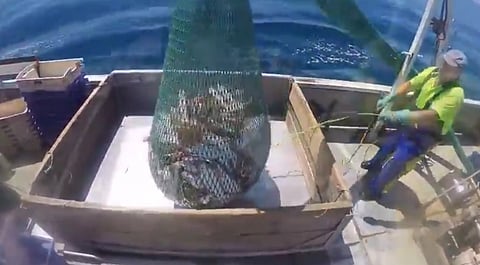

The harvest strategy in the South-East Trawl Fishery aims to maintain tiger flathead stocks at a pre-determined percentage of the pre-fishing, or virgin, biomass.
This is called the target reference point. The flathead stock has been above this target for many years so fishermen have enjoyed quotas (total allowable catches or TACs) designed to slightly reduce flathead stocks down to that reference point. However, the last flathead assessment showed that flathead is almost at that reference point so the quota has declined.
Less quota means less revenue so fishermen within the South-East Trawl Fishery Industry Association (SETFIA) began to think about how to increase the per kilogram value of flathead. One way is to catch larger flathead because larger flathead have a higher per kilogram price. The market pays more for larger flathead because they are easier to fillet and they returns a higher yield of fillets as a percentage of whole weight.
Using larger mesh in the last section of the net called the codend increases the average size of flathead caught.
However, using larger mesh and not catching medium sized fish means less catch which means that fishermen must shoot their net more often, spend more time at sea and potentially increase their operating costs. There are also costs to change to new fishing gear.
After debating the issue, SETFIA members have resolved through a formal vote to increase Danish seine mesh size. Two non-SETFIA member seiners were contacted and both supported the idea.
SETFIA has written to AFMA stating that they would like AFMA to increase the minimum mesh size in Danish Seine codends to 75mm by May 1, 2019, the start of the new fishing season.
SETFIA has contacted fishing gear suppliers and advised them of the likely change so that they can adjust their supply.
